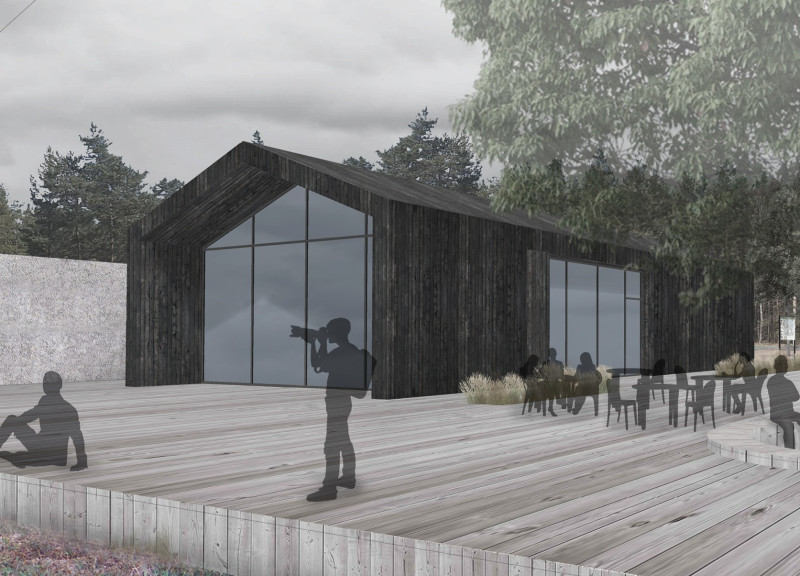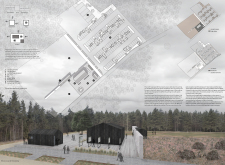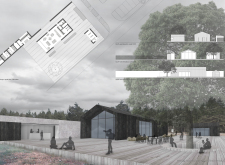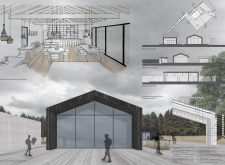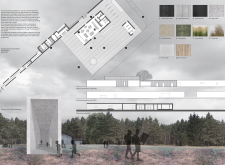5 key facts about this project
At its core, the project embodies the principles of connectivity and accessibility. It encompasses areas for relaxation, recreation, and social engagement, reflecting a commitment to creating inviting public spaces. The layout carefully delineates various zones, incorporating camping sites, a children's play area, and a service block. This organization not only enhances the functionality of the space but also encourages fluid movement throughout the site, allowing individuals to engage with both the built environment and the surrounding natural landscape seamlessly.
The choice of materials is central to the character of the project, with a predominant use of wood. The wood exterior walls provide a warm and organic aesthetic, merging the structures with their surroundings. This materiality is complemented by wood plank flooring, which continues the natural theme, creating a harmonious atmosphere. Expansive glass window frames are utilized to invite light into the interiors while offering striking views of the verdant landscape. The thoughtful application of various wall surface materials introduces texture and visual interest, contributing to the overall design integrity.
A notable design detail is the incorporation of a 3.5-meter high wall, which acts as a defining backdrop for several spaces. Instead of serving as a mere boundary, this wall introduces an interactive element to the design. Its playful architectural form encourages exploration and adds depth to the spatial experience. The pedestrian paths and service areas are designed with durability in mind, constructed from materials that can withstand the elements while providing functionality and safety.
Sustainability is woven into the design ethos, with an emphasis on environmental integration. The project showcases extensive green plantings and a thoughtfully designed lawn that supports local biodiversity. This integration not only enhances the aesthetic appeal but also contributes to ecological sustainability by promoting responsible water management and energy efficiency.
In terms of community engagement, the project fosters social connections through the strategic arrangement of gathering areas. These spaces are designed to encourage interactions among users, nurturing a sense of belonging. The children’s play area, in particular, is crafted with innovative design elements that promote imaginative play, ensuring it serves as an engaging attraction within the larger context.
The architecture reflects a careful consideration of its geographical location, utilizing materials and forms that resonate with the local environment and culture. The design expresses a dialogue between modernity and tradition, creating a sense of place that is both refreshing and familiar.
This architectural project stands as a commendable example of how design can engage with its surroundings while addressing the needs of the community. It emphasizes the importance of fostering connections between individuals and their environment, creating spaces that are both functional and aesthetically pleasing. For those interested in delving deeper into the nuances of this project, exploring the architectural plans, sections, and design ideas can provide valuable insights into its thoughtful design process and execution.


